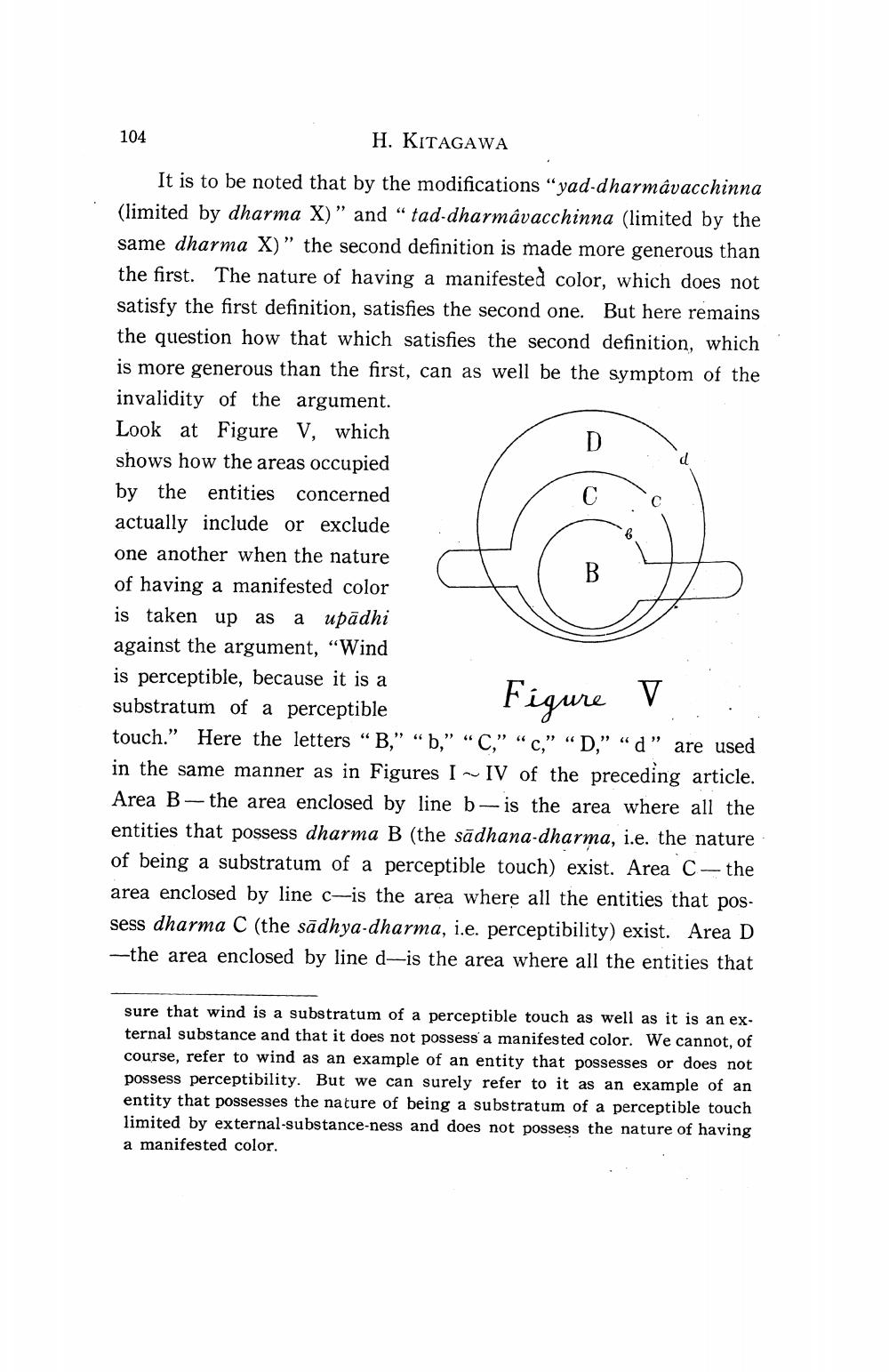Book Title: On Upadhi Author(s): Hidenori Kitagawa Publisher: Hidenori Kitagawa View full book textPage 8
________________ 104 H. KITAGAWA It is to be noted that by the modifications "yad-dharmávacchinna (limited by dharma X)" and " tad-dharmâvacchinna (limited by the same dharma X)" the second definition is made more generous than the first. The nature of having a manifested color, which does not satisfy the first definition, satisfies the second one. But here remains the question how that which satisfies the second definition, which is more generous than the first, can as well be the symptom of the invalidity of the argument. Look at Figure V, which shows how the areas occupied by the entities concerned actually include or exclude one another when the nature Ol BT of having a manifested color is taken up as a upādhi against the argument, "Wind is perceptible, because it is a substratum of a perceptible touch.” Here the letters "B," "b," "C,” “C," "D,” “d” are used in the same manner as in Figures I ~ IV of the preceding article. Area B - the area enclosed by line b- is the area where all the entities that possess dharma B (the sādhana-dharma, i.e. the nature of being a substratum of a perceptible touch) exist. Area C-the area enclosed by line c-is the area where all the entities that pos sess dharma C (the sādhya-dharma, i.e. perceptibility) exist. Area D --the area enclosed by line d-is the area where all the entities that Figure V sure that wind is a substratum of a perceptible touch as well as it is an external substance and that it does not possess a manifested color. We cannot, of course, refer to wind as an example of an entity that possesses or does not possess perceptibility. But we can surely refer to it as an example of an entity that possesses the nature of being a substratum of a perceptible touch limited by external-substance-ness and does not possess the nature of having a manifested color.Page Navigation
1 ... 6 7 8 9 10 11 12 13
